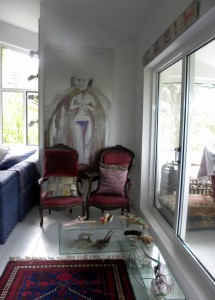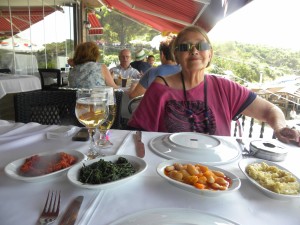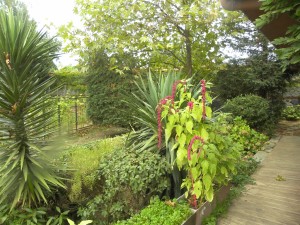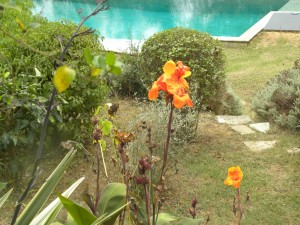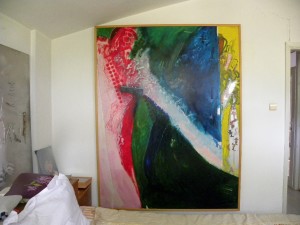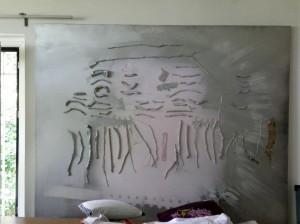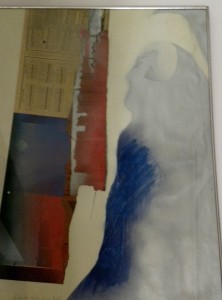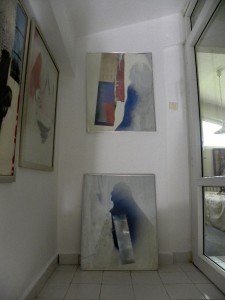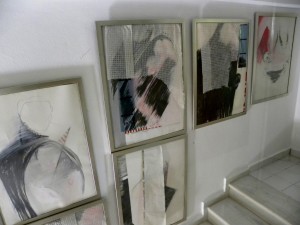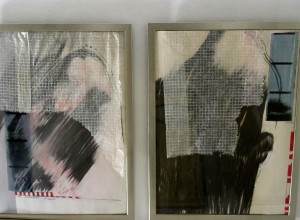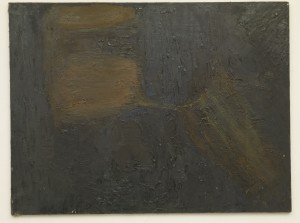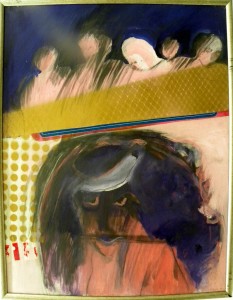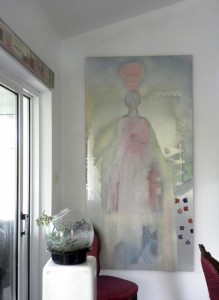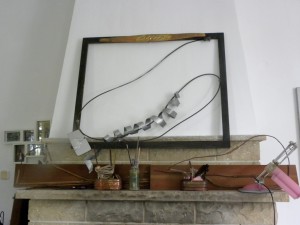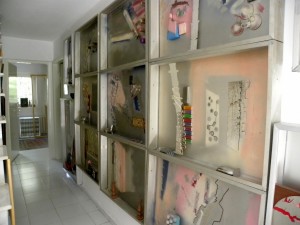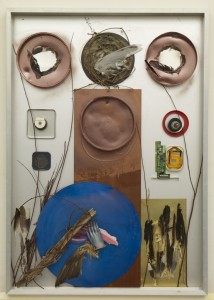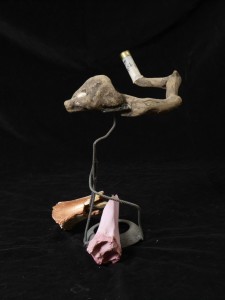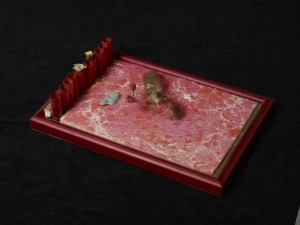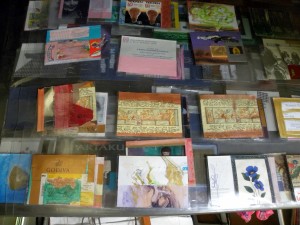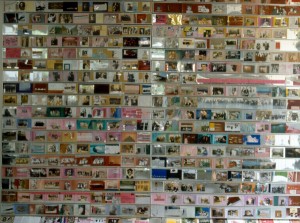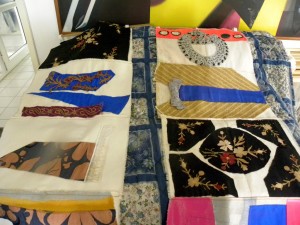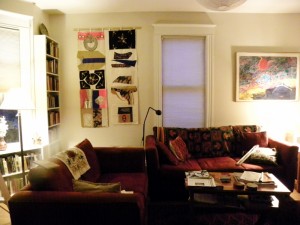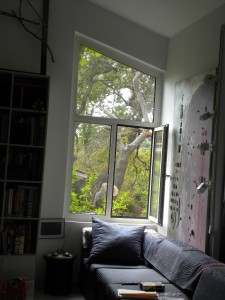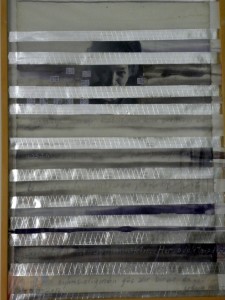A visit to the home of contemporary Turkish Artist Tomur Atagök
During my recent trip to Turkey, I was fortunate to spend several days in the home of the contemporary Turkish artist Tomur Atagök. By immersing myself in her environment, and living with her art, I gained new insights.
She had recently reinstalled the art in her home, following her major retrospective exhibition this spring.
While I was there, we heard in detail about the intense migration from Turkey to Greece, as well as nationalists burning several offices of the HDP ( Halkların Demokratik Partisi -People’s Democratic Party), and much more from the perspective of both Turkish newscasters and others in Europe and elsewhere in the Middle East. We interspersed intense news with popular culture, classical culture, and nature programs, in a parallel to her own art, which combines intense concern for current issues engulfing Turkey with commentary on popular culture, particularly as it affects women, and agony over the destruction of the environment.
Tomur lives in an idyllic compound in what used to be far out in the country, but which today is increasingly threatened by development, both government sponsored and local high end condominiums sprouting up in her small village.
While the compound where she lives still maintains an immersion in nature, we sometimes heard the not so distant boom of dynamite blasting away hills.
Since moving to Kumsuyu in the 1990s, her work has included references to the fragility of nature. She deplores our lack of respect for the natural environment, and sadly, that is only becoming more obvious each day, as the megalomaniac plans for the new airport, its highways, its storage facilities, and the third bridge destroy many acres of formerly protected forests along the Bosphorus, the only remaining forests near Istanbul, “the lungs of the city.”
What struck me, living with her art on every wall, and waking up inches from these two paintings, was her extraordinary sense of traditional lush brushwork, color and paint that she has chosen to imbue with strong contemporary references to political issues, literature, feminism and nature. I can only touch on some of her work here. Gray Nature here combined painting with sticks to suggest a fragile, disintegrating balance.
Her references to women range from Neolithic goddesses to the wives of military dictators to contemporary pop singers, sometimes all in one painting. One theme is ‘ordinary women” . In this series in her staircase, called ” Open the curtain slowly,”fabric covers the subtle reference to a woman
Born in Istanbul, she grew up in a family that was part of the secular military, but she also has ties to what she calls the matriarchal traditions of the Caucasus. She attended art schools in the United States during the late 1960s where she intensely responded to Professor Dale McKinney at Oklahoma State University and quickly grasped the principles of abstraction through the lens of Hans Hofmann’s well known theory of push-pull. She initially painted in dark tones as in this work, Shadows on the Wall of 1960.
She went on to study art at the University of California, Berkeley in the midst of the free speech movement and flower children, where her palette began to brighten, then on to the University of Washington, finally returning to Turkey in 1973 where she began moving beyond abstraction to become a pioneering feminist artist (as well as an historian of women artists in Turkey.) In 1985 she created this work, Followers, commenting on the situation for women after the military coup of 1980. This painting was on the staircase also as a prelude to “Open the Curtain Slowly.”
Since the 1980s she has filled her paintings with references to pop stars and contemporary women, as well as to the corruption of nature with plastic and other trash.
And perhaps her best known theme, the ancient Anatolian goddesses,
as an historical counterpoint reference point for women today.
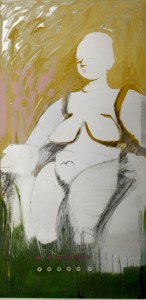
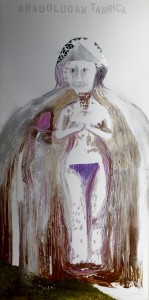
All over her house were simple gestural art works that incorporated nature as well as the trash we leave behind. This series was called Framed Nature. Her training in abstract gestures is now materialized as gestures created by sticks, wire, and other natural materials. These works hung in her living room.
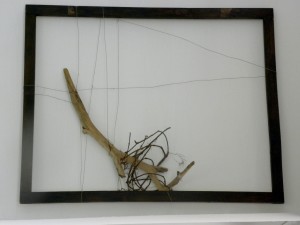
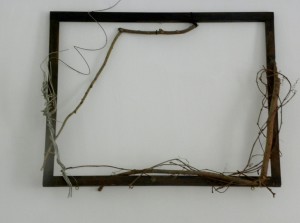
In the hallway were “art boxes,” large boxes with an assortment of trash that she has picked up.
She often combines collage, textiles, sticks, bugs, spent bullets, in small free standing sculptures and boxes. I found a huge dead fly that she added to her collection for another artwork.
This impulse to make collage extends into thousands of “diary pages” made from the wrappers and tickets of her own life,
as well as textile collages created from fabrics that are personal to her life. She generously gave me two. Here is a detail of those textile collages, note the antique collar at the top of the right hand collage. The piece below that is actually gold fabric, and below that a hand embroidered antique fabric.
Here it is installed in my living room in Seattle (with the antique collar visible on the top left).
Tomur has created hundreds of art works in her prolific career, works protesting war, honoring important writers, celebrating popular culture. But the dominant theme of the works installed in her home today is nature, as it is outside her window, and as we are acting on it with all of our carelessness.
This entry was posted on October 19, 2015 and is filed under Contemporary Art, Feminism, Turkish Women Artists, Uncategorized.

